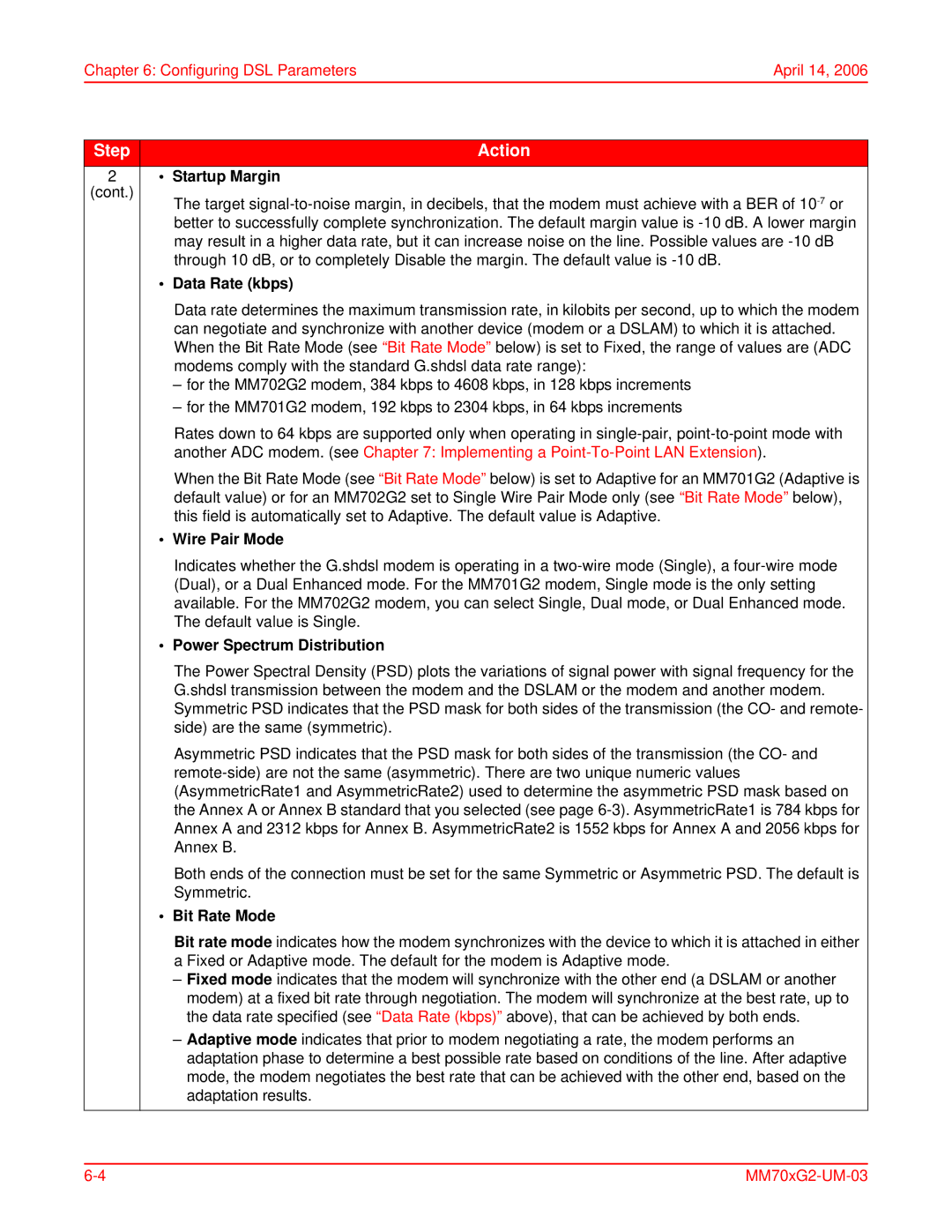
Chapter 6: Configuring DSL Parameters | April 14, 2006 |
Step | Action |
2• Startup Margin
(cont.)
The target
•Data Rate (kbps)
Data rate determines the maximum transmission rate, in kilobits per second, up to which the modem can negotiate and synchronize with another device (modem or a DSLAM) to which it is attached. When the Bit Rate Mode (see “Bit Rate Mode” below) is set to Fixed, the range of values are (ADC modems comply with the standard G.shdsl data rate range):
–for the MM702G2 modem, 384 kbps to 4608 kbps, in 128 kbps increments
–for the MM701G2 modem, 192 kbps to 2304 kbps, in 64 kbps increments
Rates down to 64 kbps are supported only when operating in
When the Bit Rate Mode (see “Bit Rate Mode” below) is set to Adaptive for an MM701G2 (Adaptive is default value) or for an MM702G2 set to Single Wire Pair Mode only (see “Bit Rate Mode” below), this field is automatically set to Adaptive. The default value is Adaptive.
•Wire Pair Mode
Indicates whether the G.shdsl modem is operating in a
•Power Spectrum Distribution
The Power Spectral Density (PSD) plots the variations of signal power with signal frequency for the G.shdsl transmission between the modem and the DSLAM or the modem and another modem. Symmetric PSD indicates that the PSD mask for both sides of the transmission (the CO- and remote- side) are the same (symmetric).
Asymmetric PSD indicates that the PSD mask for both sides of the transmission (the CO- and
Both ends of the connection must be set for the same Symmetric or Asymmetric PSD. The default is Symmetric.
•Bit Rate Mode
Bit rate mode indicates how the modem synchronizes with the device to which it is attached in either a Fixed or Adaptive mode. The default for the modem is Adaptive mode.
–Fixed mode indicates that the modem will synchronize with the other end (a DSLAM or another modem) at a fixed bit rate through negotiation. The modem will synchronize at the best rate, up to the data rate specified (see “Data Rate (kbps)” above), that can be achieved by both ends.
–Adaptive mode indicates that prior to modem negotiating a rate, the modem performs an adaptation phase to determine a best possible rate based on conditions of the line. After adaptive mode, the modem negotiates the best rate that can be achieved with the other end, based on the adaptation results.
